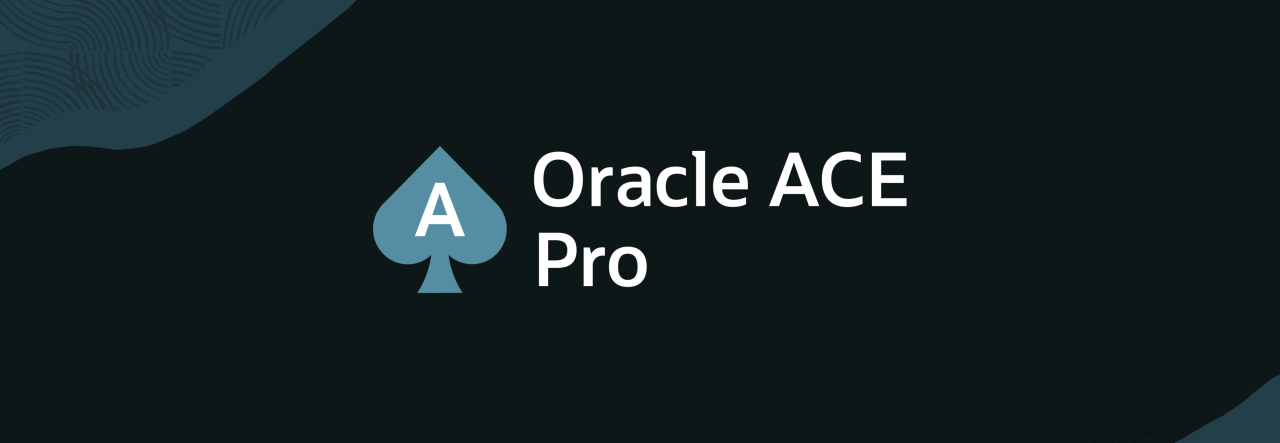Creating CDBs and Regular PDBs – Oracle Database: Managing Multitenant Architecture Ed 1
- Configure and create a CDB – POST I
- Create a new PDB from the CDB seed – POST I
- Explore the structure of PDBs – POST I, POST II
Backup and Duplicate – Oracle Database: Managing Multitenant Architecture Ed 1
- Perform Backup and Recover CDBs and PDBs – POST I
- Duplicate an active PDB – POST I
- Duplicate a Database – POST I, POST II, POST III
Manage Application PDBs – Oracle Database: Managing Multitenant Architecture Ed 1
- Explain the purpose of application root and application seed – POST I POST II
- Define and create application PDBs – POST I
- Install, upgrade and Patch applications – POST I
- Create and administer Application PDBS – POST I
- Clone PDBs and Application containers – POST I
- Plug and unplug operations with PDBs and application containers – POST I, POST II
- Comparing Local Undo Mode and Shared Undo Mode – POST I
Recovery and Flashback – Oracle Database: Managing Multitenant Architecture Ed 1
- Restore and Recovering Databases with RMAN – POST I , POST II
- Perform CDB and PDB flashback – POST I
Backup Strategies and Terminology – Oracle Database: Backup and Recovery Workshop
- Perform Full and Incremental Backups and Recoveries – POST I, POST II
- Compress and Encrypt RMAN Backups – POST I, POST II, POST III
- Use a media manager
- Create multi-section backups of very large files – POST I
- Create duplexed backup sets – POST I
- Create archival backups – POST I
- Backup of recovery files – POST I
- Backup non database files – POST I
- Back up ASM meta data – POST I
Restore and Recovery Concepts – Oracle Database: Backup and Recovery Workshop
- Employ the best Oracle Database recovery technology for your failure situation – POST I
- Describe and use Recovery technology for Crash, Complete, and Point-in-time recovery – POST I, POST II, POST III
Using Flashback Technologies – Oracle Database: Backup and Recovery Workshop
- Configure your Database to support Flashback – POST I, POST II, POST III
- Perform flashback operations – POST I, POST II, POST III
Duplicating a Database – Oracle Database: Backup and Recovery Workshop
Diagnosing Failures – Oracle Database: Backup and Recovery Workshop
- Detect and repair database and database block corruption – POST I
- Diagnosing Database Issues –
Transporting Data – Oracle Database: Backup and Recovery Workshop
Install Grid Infrastructure and Oracle Database – Oracle Database: Deploy, Patch and Upgrade Workshop
- Install Grid Infrastructure for a Standalone server – POST I
- Install Oracle Database software – POST I, POST II
Patching Grid Infrastructure and Oracle Database – Oracle Database: Deploy, Patch and Upgrade Workshop
- Patch Grid Infrastructure and Oracle Database – POST I
Upgrading to Oracle Grid Infrastructure – Oracle Database: Deploy, Patch and Upgrade Workshop
- Upgrade Oracle Grid Infrastructure
Oracle Database 18c: New Features – Oracle Database: Deploy, Patch and Upgrade Workshop
Oracle Restart – Oracle Database: Deploy, Patch and Upgrade Workshop
- Configure and use Oracle Restart to manage components – POST I
Install Grid Infrastructure for a Standalone server – Oracle Database: Deploy, Patch and Upgrade Workshop
- Rapid Home Provisioning
Using Availability Enhancements – Oracle Database 19c: New Features for Administrators
Monitoring and Tuning Database Performance – Oracle Database: Administration Workshop
- Managing Memory Components – POST I
- Understanding The Automatic Workload Repository (AWR) – POST I
- Understanding The Advisory Framework
- Monitoring Wait Events, Sessions, and Services
- Managing Metric Thresholds and Alerts – POST I
- Understanding and Using The Performance Tuning Methodology
- Performing Performance Planning
- Understanding The Automatic Database Diagnostic Monitor (ADDM) – POST I
Manage CDBs and PDBs – Oracle Database: Managing Multitenant Architecture Ed 1
- Manage PDB service names and connections
- Manage startup, shutdown and availability of CDBs and PDBs
- Change the different modes and settings of PDBs
- Evaluate the impact of parameter value changes
- Performance management in CDBs and PDBs
- Control CDB and PDB resource usage with the Oracle Resource Manager – POST I
Upgrading and Transporting CDBs and Regular PDBs – Oracle Database: Managing Multitenant Architecture Ed 1
- Upgrade an Oracle Database – POST I
- Transport Data –
Manage Security in Multitenant databases – Oracle Database: Managing Multitenant Architecture Ed 1
- Manage Security in Multitenant databases – POST I
- Manage PDB lockdown profiles – POST I
- Audit Users in CDBs and PDBs
- Manage other types of policies in application containers
Configuring and Using RMAN – Oracle Database: Backup and Recovery Workshop
- Configure RMAN and the Database for Recoverability
- Configureand Using an RMAN recovery catalog – POST I
Performing Recovery – Oracle Database: Backup and Recovery Workshop
RMAN Troubleshooting and Tuning – Oracle Database: Backup and Recovery Workshop
Creating an Oracle Database by using DBCA – Oracle Database: Deploy, Patch and Upgrade Workshop
- Create, Delete and Configure Databases using DBCA – POST I
Upgrade the Oracle Database – Oracle Database: Deploy, Patch and Upgrade Workshop
- Plan for Upgrading an Oracle Database – POST I
- Upgrade an Oracle Database – POST I, POST II
- Perform Post-Upgrade tasks – POST I
Using General Overall Database Enhancements – Oracle Database 19c: New Features for Administrators
- Install Oracle Database software – POST I
- Create, Delete and Configure Databases using DBCA – POST I
- Creating CDBs and Regular PDBs – POST I
- Use Miscellaneaous 19c New Features –
Using Diagnosibility Enhancements – Oracle Database 19c: New Features for Administrators
- Use new Diagnoseability Features –

